Nortraships
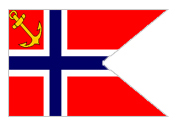 The Germans invaded Norway in early April 1940. Some Norwegian ships escaped and many were at that time in foreign ports. The Norwegian Shipping and Trade Mission (“Nortraships”) was formed by the exiled Norwegian Government for its free shipping, whose over 800 ships then gave significant support to the Allied cause through to the war’s end.
The Germans invaded Norway in early April 1940. Some Norwegian ships escaped and many were at that time in foreign ports. The Norwegian Shipping and Trade Mission (“Nortraships”) was formed by the exiled Norwegian Government for its free shipping, whose over 800 ships then gave significant support to the Allied cause through to the war’s end.
Many Australians were working on Norwegian vessels, many of them and their ships being lost to enemy action. A number of varied-purpose vessels were requisitioned by the British Ministry of War Transport and allotted for service in the Asia/Pacific theatre of the war. Bulk material of all types as well as the impedimenta of war, and personnel, comprised their cargoes. A number became casualties.
The summary which follows, although mentioning only a few ships, is indicative of the Norwegian contribution to victory in the Indian/Asia/Pacific area:
Ship |
Event |
| Vito | 940-1941 phosphate, coal and iron cargoes, 1941-1945 military supplies trans-Pacific, survived enemy air attacks |
| Vinni | 1940 phosphate cargoes, then victim to deception German raider Komet, the crew captured, ship sunk |
| Panama Express | 1940-1945 sailed 327,000 miles with Pacific theatre military supplies and personnel, survived Japanese attacks, participated in Philippines re-capture |
| Skagerak | 1940-1945 Australian coast/South West Pacific area carrying nearly 370,000 tons in the period, including help in Nauru families’ evacuation |
| British Colombia Express | 1940-1945 Australian coast/South West Pacific area transporting cargo and personnel, used by General Macarthur as HQ, survived bombing in Philippines |
| Hermion | June 1941-September 1946 under control of the Australian Shipping Control Board, including use in returning Australian troopes from Middle East 1942 |
| Lidvard | Escaped Vichy French “internment” July 1941 then operated to and from Australia in Indian and Pacific Oceans to war’s end |
| Prominent | 1942 returning Australian troops and equipment from Middle East to Java/Sumatra. Most of the personnel landed became prisoners of war. |
| General Fleischer | Built 1943/1944, numerous campaign engagements, served in Battle for Leyte Gulf, P.I., survived 203 air raids, fired 151 gun and 5500 Oerlikon rounds |
| Fingal | Australian coastal war transportation. En route Sydney-Darwin on 5 May 1943, torpedoed by Jap. submarine I.180 off Coffs Harbour New South Wales. Sank in minutes, 12 crew lost, 19 survived. |
| India | Left Peru for Australia 3/9/43, oil cargo. Nothing more heard. Fate unknown, perhaps German raider Michel vicinity Easter Island |
| Acadia | 1940-1945 logistic support in the Pacific. Briefly detained as suspect at Fremantle July 1940, then some 38 voyages carrying phosphates and supplies |
Also deserving of mention are Nortraships’ participation on the Indian Ocean battlefield: Hoegh Silverdawn and Ferncastle sunk by German raider Michel, while others (along with some mentioned above) such as Hindanger, Hellas, Herborg, Eidsvold, Erling Brovig, Seirstad, Tunni, Bordvik, Proteus and many more aided the struggle to victory.
Date posted: 2014-04-02 | Comments(0)
Royal Packet Navigation Company of Netherlands East Indies
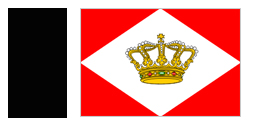 This company, often called the KPM, may be considered the Far East/South East Asia component of the large Dutch home mercantile fleet. Commencing operations in the late 19th Century, its ships numbered about 150 when the May 1940 German invasion of the Netherlands necessitated a severing of home relations and a turning to Australia for logistic basing and fleet support for surviving ships. Japan’s entry to the war in December
1941 marked the start of a three month period in which much of KPM’s fleet and virtually all of its land infrastructure were lost.
This company, often called the KPM, may be considered the Far East/South East Asia component of the large Dutch home mercantile fleet. Commencing operations in the late 19th Century, its ships numbered about 150 when the May 1940 German invasion of the Netherlands necessitated a severing of home relations and a turning to Australia for logistic basing and fleet support for surviving ships. Japan’s entry to the war in December
1941 marked the start of a three month period in which much of KPM’s fleet and virtually all of its land infrastructure were lost.
The worst single-ship loss of people occurred when the Rosenboom, carrying 500 passengers and crew, was sunk by Japanese submarine I 59 in the Indian Ocean, only about 80 surviving the sinking and finally only six to be rescued.
As to the remainder of the KPM fleet, some thirty ships operated out of Australia through to war’s end, the details of some as follows:
Ship |
Event |
| Cremer | Trooping Sydney-Port Moresby 6/4/42, sunk 5/9/43 |
| Van Heutz | Trooping Sydney-Port Moresby April and May 1942 |
| Tasman | Trooping Sydney-Port Moresby 6/4/42 |
| Maetsuycker | Trooping Sydney-Port Moresby 6/4/42 |
| Bantam (gt 3322) | Trooping Sydney-Port Moresby May1942, sunk 8/3/43 |
| Bontekoe | Trooping Sydney-Port Moresby May 1942, Sydney-Milne Bay 25/6/42 |
| Van Heemskerk | Trooping Sydney-Port Moresby May1942,sunk14/4/43 |
| Van Heutz | Trooping Sydney-Port Moresby May 1942 |
| Jacob (gt 2839) | Sunk 8/3/43 |
| Sibigo (gt 1594) | Sunk 16/3/45 |
(Part of KPM’s escaped fleet was based in Bombay. Among the many ship casualties, the General van der Heyden, General van Sweeten and Sinombo were totally destroyed on 14 April 1944 when the British ammunition and explosives ship Fort Stikine blew apart in the same dock.)
Closely associated, though not belonging to KPM, the Nederland Line vessel Oranje became well-known in the Asia/Pacific wartime environment. Built in 1939, of 20,565 gross tons, she was laid up in Sourabaya at the time Germany invaded the Netherlands. Offered to Australia as a hospital ship, she was converted in Sydney and from August 1941. Forty voyages later she returned to the Asian passenger trade in July 1946.
Date posted: 2014-04-02 | Comments(0)
Hain Steamship Company
Part of the P&O Group
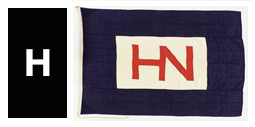 This website should not overlook the horrific fate of the 111 (85 crew, 17 service personnel, 9 passengers) souls on board the Behar, on 9 March 1944, the ship bound from New Zealand and Melbourne to Bombay. The Japanese heavy cruiser Tone intercepted the ship near the Cocos Islands. Their shells quickly set the ship ablaze and sinking. All personnel (except three already killed) were taken aboard Tone.
This website should not overlook the horrific fate of the 111 (85 crew, 17 service personnel, 9 passengers) souls on board the Behar, on 9 March 1944, the ship bound from New Zealand and Melbourne to Bombay. The Japanese heavy cruiser Tone intercepted the ship near the Cocos Islands. Their shells quickly set the ship ablaze and sinking. All personnel (except three already killed) were taken aboard Tone.
What has become known as the Behar massacre took place that evening on Tone’s deck: 53 crew, 15 gunners and 4 passengers were felled and beheaded. The remainder were put ashore at Tandjong Priok to see the war out as prisoners-of-war.
Justice meted out by the War Crimes trials affirmed seafarers’ wartime dangers.
Read moreDate posted: 2014-04-02 | Comments(0)
E&A Line
Later an associate of P&O Company
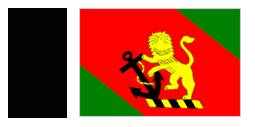 This line, founded in 1872, had a long relationship particularly with the Queensland (originally Colonial) Government through its Singapore-Brisbane-Sydney service. Its vessel Eastern carried Australian Expeditionary Force troops to Rabaul in 1914.
This line, founded in 1872, had a long relationship particularly with the Queensland (originally Colonial) Government through its Singapore-Brisbane-Sydney service. Its vessel Eastern carried Australian Expeditionary Force troops to Rabaul in 1914.
The following ships were owned by the company at the start of the Second World War:
Ship |
Built |
Gross Tons |
In Service |
| Tanda | ? | 6956 | 1924-1944 |
| Nellore | ? | 6856 | 1929-1944 |
| Nankin | ? | 6069 | 1931-1942 |
All were lost. Nankin on 5 May 1942 was shelled and captured by the German surface raider vessel Thor and later lost by sabotage in Yokohama harbour. Nellore was torpedoed in the Indian Ocean on 30 June 1944, its forty-seven survivors escaping in a lifeboat which was washed up twenty eight days later on Madagascar, 2500 miles from the sinking. Tanda was torpedoed by a submarine off the Indian coast on 6 July 1944.
Date posted: 2014-04-02 | Comments(0)
China Navigation Company Limited
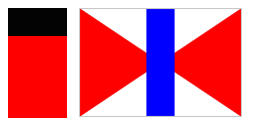 More than half of this company’s 37-ship Asia-based fleet were lost in the withdrawal in the face of the Japanese invasion. Australians had some familiarity with their many ships operating in the south-west Pacific area pre-war. This table sets out the known fate of a number of these:
More than half of this company’s 37-ship Asia-based fleet were lost in the withdrawal in the face of the Japanese invasion. Australians had some familiarity with their many ships operating in the south-west Pacific area pre-war. This table sets out the known fate of a number of these:
Ship |
Built |
Gross Tons |
In Service |
| Kwangting | 1921 | 2626 | Torpedoed Java 4 Jan 1942 |
| Taiyuan | 1929 | 2994 | Scuttled Surabaya 2 March 1942 |
| Anking | 1925 | 3472 | Torpedoed Tjilatjap 3 March 1942 |
| Anshun | 1930 | 3138 | Bombed, sunk Milne Bay 6 Sept 1942 |
| Chengtu | 1914 | 2219 | Sunk by mine Macassar Strait |
| Kiangsu | 1921 | 2661 | Fire-gutted Singapore 10 June 1944 |
| Hsin Peking | 1914 | 2104 | Bombed, sunk Manila 13 Dec 1944 |
| Chekiang | 1914 | 2171 | Bombed, sunk Hong Kong 16 Jan 1945 |
Casualty detail is shown above.
Read moreDate posted: 2014-04-02 | Comments(0)